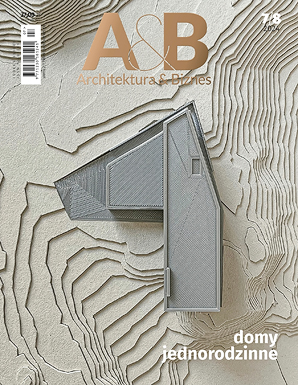Podczas gdy w Warszawie obserwujemy skutki awarii oczyszczalni i wypuszczania ścieków do Wisły, duńska stacja uzdatniania wody projektu Henninga Larsena zachęca do rozmowy na temat zrównoważonego wykorzystania zasobów.
Prawie dwie trzecie ludności doświadcza poważnego niedoboru wody w ciągu przynajmniej jednego miesiąca w roku. Wraz ze zmianą klimatu i zwiększeniem gęstości zaludnienia, wynik ten będzie się wyłącznie powiększał.
Stacja uzdatniania wody została otwarta w 2017 roku jako część większego parku klimatyczno‑środowiskowego Solrødgård. Park ten, służący duńskiemu miastu Hillerød w północnej Zelandii, stara się zwrócić uwagę na globalne wyzwanie, jakim jest zrównoważone wykorzystanie zasobów. Jego celem jest rozpoczęcie publicznego dialogu i zwiększenie świadomości społeczeństwa poprzez stworzenie publicznej przestrzeni w ramach miejskiej infrastruktury.
sytuacja
© Henning Larsen
Otwarty, zielony dach stacji w Hillerød jest jednocześnie świetną przestrzenią na rodzinny piknik, jak i edukuje mieszkańców w kwestii wykorzystania zasobów. Centrum recyklingu, stacja uzdatniania wody i przestrzenie administracyjne stoją przy szlakach spacerowych, wieży obserwacyjnej dla miłośników ptactwa i hotelu dla… nietoperzy.
Część industrialna projektu została włączona w krajobraz poprzez podniesienie terenu i stworzenie zielonych dachów. Droga serwisowa dzieli całość na dwie części, a odsłonięte w tym miejscu elewacje pokryte są stalą corten. Przez zielony dach biegnie sieć meandrujących ścieżek, prowadzących przez łąkę pokrytą roślinami zmieniającymi swój kolor w zależności od pory roku. Co więcej, spacerujący po zadaszeniu turyści mogą podglądać przez świetliki stację i prowadzony w niej codzienny proces oczyszczania piętnastu tysięcy metrów sześciennych ścieków.
Oczyszczalnia ścieków Solrødgård jest w stanie zwiększyć poziom przetwarzania tak, aby móc wspierać przyszły rozwój Hillerød i okolic. Stancja może także utylizować fosfor i wytwarzać energię cieplną z biomasy ze ścieków.
oprac. red.
na podstawie informacji prasowej
Part park, part utility, a Danish water treatment plant sparks a conversation on climate change Henning Larsen’s open, green‑roofed design in Hillerød is fit for a picnic, putting the community face to face with their use of resources
Nearly two‑thirds of the world’s population experiences severe water scarcity during at least one month of the year. As climate change and global crowding intensify, this figure will only become more severe.
The Solrødgård (Solrodgaard) Climate and Environment Park, serving the city of Hillerød in northern Zealand, seeks to shine a brighter spotlight on the global challenge of sustainable resource use. Developed from a 50‑hectare, 1 billion‑DKK masterplan, the park aims to open a community dialogue on resource use and climate awareness by creating public appeal within municipal infrastructure. Henning Larsen contributed to the open park with their exterior design and landscaping for the Solrødgård Water Treatment Plant, embedding the public facility within an accessible earthen framework.
Here, a recycling center, wastewater treatment plant and administrative facility stand alongside walking trails, a birdwatching tower, and a roosting hotel for local bats. By weaving recreational space into public utilities, the park creates a unique space where visitors can gain a natural, firsthand exposure to the cycle of natural resources within the community. The design extends a critical conversation on resource scarcity, which disproportionately affects developing communities.
wizualizacja
© Henning Larsen
The project sets the industrial facility into the landscape, conceptually pinching the grass and lifting it up to insert program in the space underneath. A service road splits the space in two; the facades exposed in this cut are clad in weathering steel, giving the exterior the appearance of a poche section cut of the earth. The roof on top is a web of meandering pedestrian paths, weaving through perennial plant beds whose blossoms shift in color through the seasons (green, yellow, and red.) Visitors can peer through skylights on the roof and these central glass facades into the plant’s processing wing and filtration facilities, to watch as the plant treats 15,000 cubic meters of wastewater each day. The design concept allows the community to connect with their own use of resources, while minimizing the visual and olfactory presence often associated with water treatment plants.
The rooftop paths give a view over the rest of the park, but the central pathway is really where visitors can get an idea of how their community’s water cycle works, explains Marie Ørsted Larsen, Senior Landscape Architect at Henning Larsen. It’s symbolic of us cutting into the landscape to look within, creating a contrast between the natural water cycle and the constructed process that supports our communities.
A small creek trickles through this central channel, passing through a narrow garden that demonstrates how natural foliage cleans and filters groundwater. For visitors passing through, this installation is an organic contrast to the industrial presence of the water treatment plant, prompting reflection on the function and environmental footprint of the public utility.
The Solrødgård Water Treatment Plant is capable of expanding its processing capacity to support future growth in and around Hillerød, and is capable of recycling phosphorous and producing biomass heat energy from the wastewater. Future communities will be able to explore a landscape that provides recreation, a connection to nature, and an everyday education in climate awareness.
Solrødgård Water Treatment Plant opened in 2017. As part of the larger Solrødgård Climate and Environment Park, Henning Larsen’s work joins collaborators Gottlieb Paludan, C.F. Møller, Jakobsen & Blindkilde, Orbicon, DHI and Hillerød Spildevand.










































































